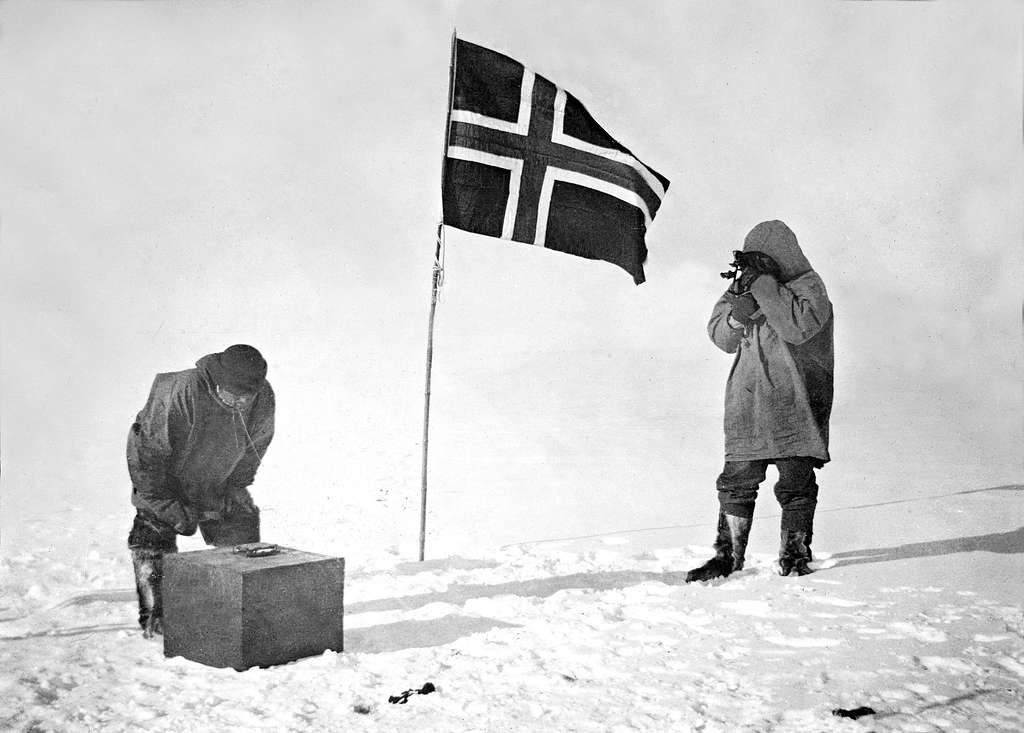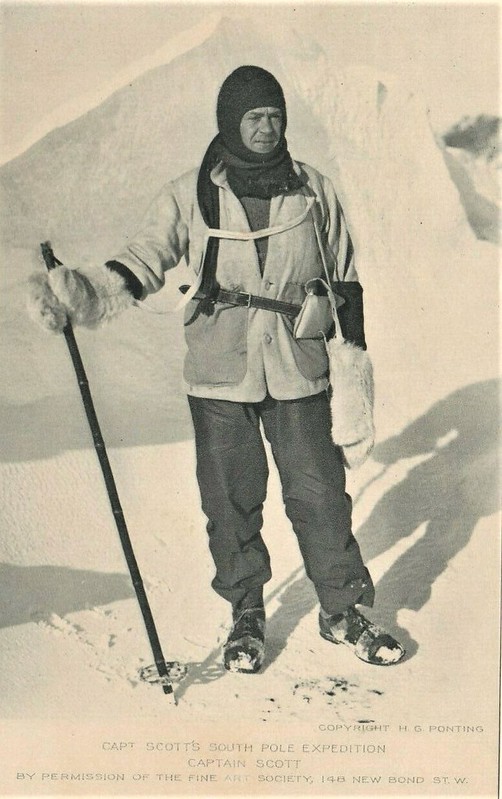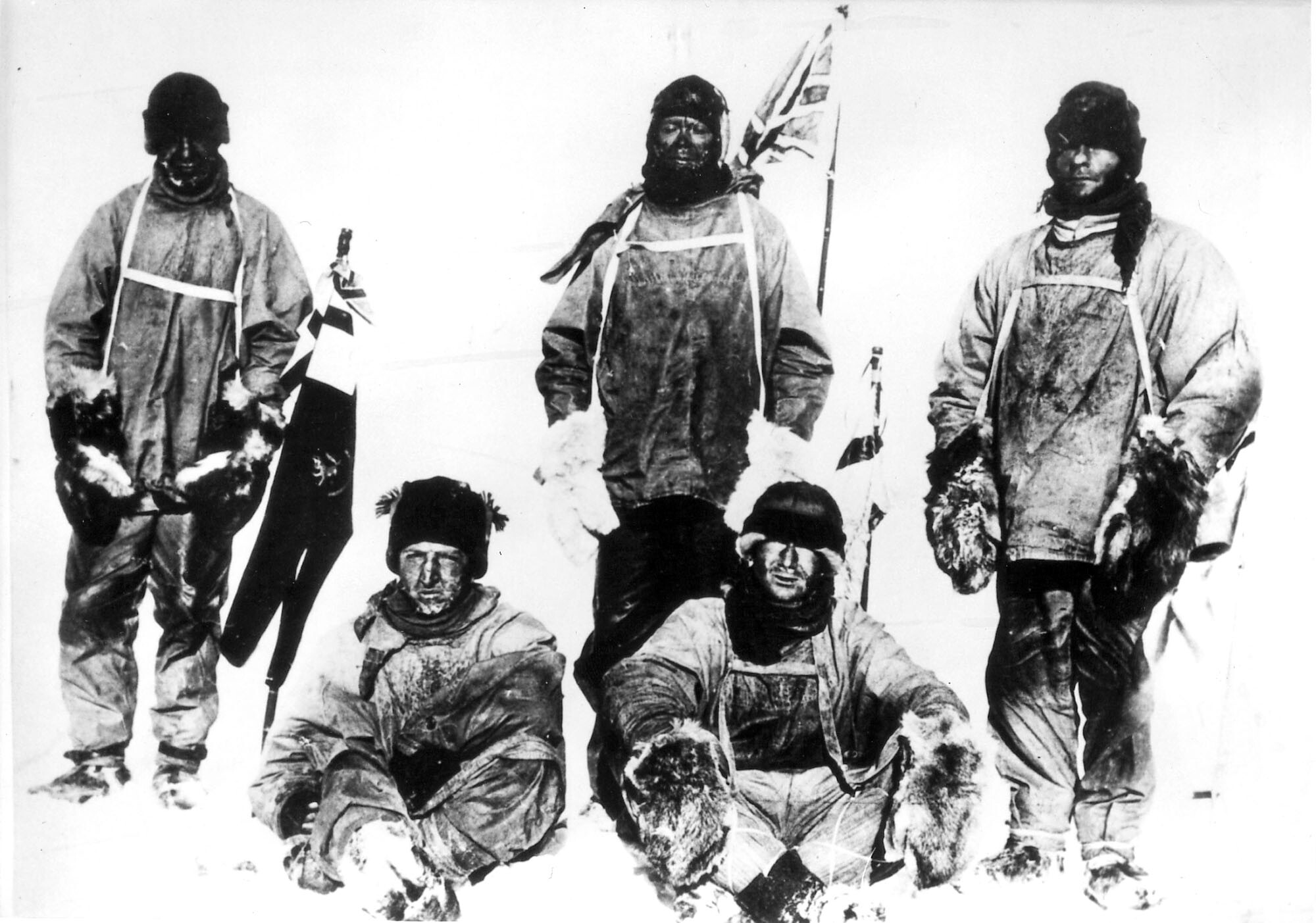In 1912, British explorer Robert Falcon Scott and his team set out on a journey to the South Pole from which none of them would ever return.
Imagine if, at the very moment Neil Armstrong took his historic first steps on the moon and declared, “One small step for man, one giant leap for mankind,” he looked up to find that a group of astronauts had already arrived, planted their country’s flag, and sent a triumphant message back home.
That crushing realization mirrors the disappointment of Captain Scott and his four-man crew when they finally reached the unexplored South Pole on January 18—only to see a tent and a Norwegian flag waving in the wind.
To their dismay, Norwegian explorer Roald Amundsen had been settled there for an entire month preceding their arrival.

Amundsen takes the solar altitude and Hanssen controls the artificial horizon at the South Pole. The Norwegians stayed on the spot for several days and made various observations. December 1911. Picryl
Bitter from the lack of reward and exhausted from the journey inland, the crew began planning their route back to Cape Evans on the coast. It was imperative that they get as far as possible before the temperature plummeted to potentially fatal levels.
Not long into their journey home, an injured and infected Edgar Evans collapsed in the snow, unable to continue on.
When they set up camp that night, another crew member, Lawrence Oates, walked right out of the crew’s tent and head-on into a blizzard after uttering haunting last words: “I am just going outside and may be some time.”
The three remaining survivors persisted on towards their basecamp but got sidetracked by a snowstorm that trapped them in their tent for 4 days. As their supplies depleted, they knew they had a slim chance of survival. They each wrote goodbye letters to their families back home.

The Terra Nova Expedition, officially the British Antarctic Expedition. Flickr
Captain Scott, who is assumed to have died last, wrote his final letter home on March 29, 1912 which read “It seems a pity, but I do not think I can write more.” By the time a search party recovered the three bodies in November 1912, they had been waiting, lifeless in the tundra, for seven months.
Their bodies were discovered by an 11-person team, one of which was a young, Norwegian explorer named Tryggve Tran.
The team buried the three bodies in the place they died, and Tran laid his own skis over the top of their makeshift grave in the sign of a cross. He used Scott’s skis to get home as a way to honor the crew and their mission.



